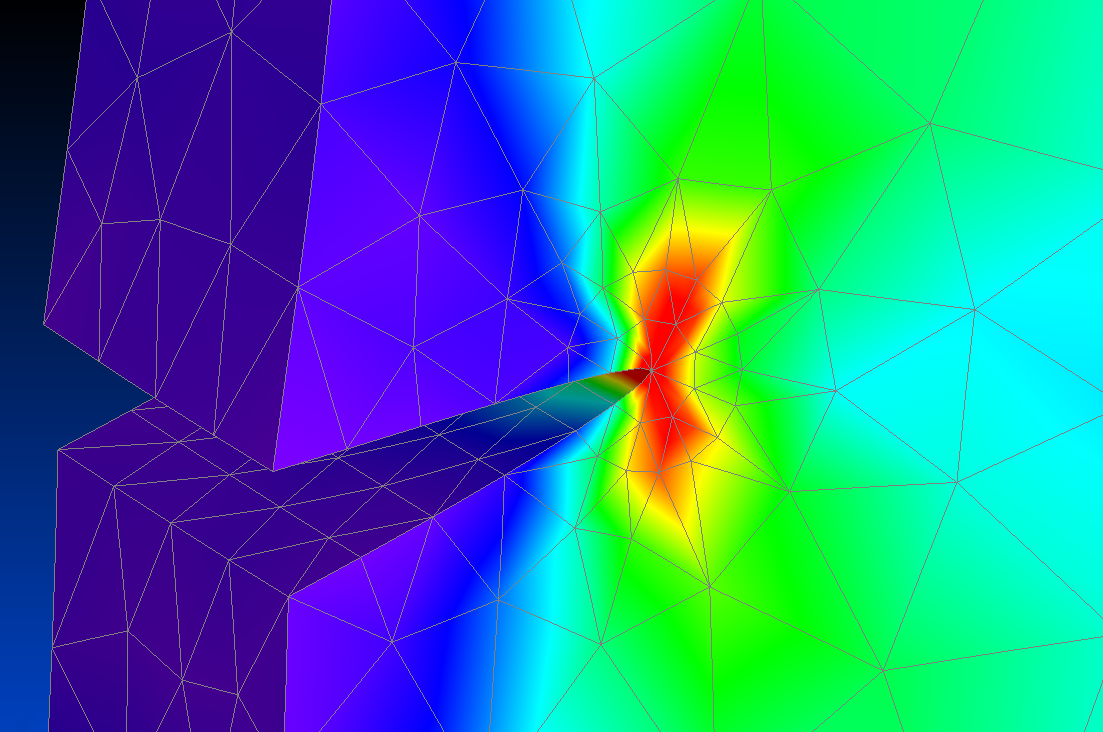Description
Continuum Mechanics Website
www.continuummechanics.org is my sister website. It covers all the fundamental aspects of mechanics - stress, strain, principal values, Hooke's Law, von Mises Stress, etc - in the presence of finite deformations and rotations.Thank You
Thank you for visiting this web page. Feel free to email me if you have questions or comments.Please consider visiting an advertiser here. Doing so helps generate revenue that supports this website and its continued development.
Bob McGinty
bmcginty@gmail.com
| Author | Bob McGinty, PhD, PE(ret) | |
| bmcginty@gmail.com |
THIS WEBSITE IS UNDER CONSTRUCTION. I expect it to take several years to complete. In the meantime, I welcome all input, suggestions, and contributions to improve its quality and usefulness.
Table of Contents
- INTRODUCTION
- LINEAR ELASTIC FRACTURE MECHANICS
- Stress Concentrations at Holes
- Stresses at Elliptical Holes
- Griffith's Energy Release Rate
- Westergaard's Solution for Cracks
- Stress Intensity Factor, K
- Crack Tip Displacements
- FEA Meshing Guidelines
- Determining K from Displacements
- Loading Modes I, II, III (in development)
- NONLINEAR FRACTURE MECHANICS
Additional References
- Fracture Mechanics: Fundamentals and Applications, by T. L. Anderson (Amazon)
- Nonlinear Fracture Mechanics for Engineers, by Ashok Saxena (Amazon)
- http://en.wikipedia.org/wiki/Fracture_mechanics
Continuum Mechanics Website
Visit my sister website, www.continuummechanics.org, for information on continuum mechanics. It covers all the fundamental aspects of mechanics - stress, strain, principal values, Hooke's Law, von Mises Stress, etc - in the presence of finite deformations and rotations.A Note About The Web Technologies Used Here
Two relatively new web technologies are used on these pages. The first is Scalable Vector Graphics, or SVG. Pages on this site will display SVG files in compatible browsers, and PNG files in incompatible ones. The advantage of SVG over PNG is that SVG graphics can be scaled to any size without pixelization occurring. SVG files used here were created using Inkscape, an excellent graphics program available free on the internet here.The second new technology used here is MathJax, a Javascript based display engine for mathematical equations programmed in the LaTeX language. MathJax eliminates the need to display equations as GIF or PNG graphics files (or even SVG for that matter). MathJax requires only the following line of code in the <HEAD> segment of a web page.
<script type="text/javascript" src="https://cdnjs.cloudflare.com/ajax/libs/mathjax/2.7.5/latest.js?config=TeX-MML-AM_CHTML"></script>
It is then possible to program any math expression in the HTML source using the LaTeX language. For example, typing
\(\sigma_{ij}\) produces \( \sigma_{ij} \).
Bob McGinty
October 2014
